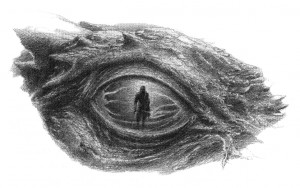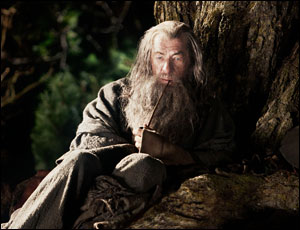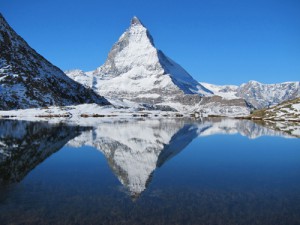 As you know, in May this year J R R Tolkien’s translation of the epic Anglo-Saxon poem Beowulf was finally published. This beautiful volume, edited by Christopher Tolkien, also includes commentary on the poem and the task of translating it (taken from the Professor’s own lectures); J R R Tolkien’s own Old English poem, ‘Sellic Spell’ (in both the Anglo Saxon and modern English); and a poem ‘The Lay of Beowulf’, again written by the Professor.
As you know, in May this year J R R Tolkien’s translation of the epic Anglo-Saxon poem Beowulf was finally published. This beautiful volume, edited by Christopher Tolkien, also includes commentary on the poem and the task of translating it (taken from the Professor’s own lectures); J R R Tolkien’s own Old English poem, ‘Sellic Spell’ (in both the Anglo Saxon and modern English); and a poem ‘The Lay of Beowulf’, again written by the Professor.
As someone who studied Old English and Middle English at University, and having read both Beowulf and Tolkien’s translation of Sir Gawain and the Green Knight, I had long been curious about the Professor’s Beowulf translation. It’s been a long wait for this text to be published – and it doesn’t disappoint!
The first thing one notices about the book is what a lovely edition it is. A black hardback with gold lettering on the spine, the book has a paper jacket, which features three of Tolkien’s own illustrations – including on the front a beautiful green dragon, curled like knotwork and delicately coloured. This image and the lettering on the front and spine, in white and gold, are raised – a nice touch which adds to the luxurious feel of this book. (If you want to go REALLY luxurious, Harper Collins, Tolkien’s publishers in Europe, have a special slipcase edition. As I think this is a text to which I will want to refer again and again, I may start saving my pennies for that edition…)
As ever, Christopher Tolkien’s Preface and Notes are helpful and insightful. In the Preface, he addresses the issues of translation: how does one choose the right word to capture all the nuance and implication of a word in another language? There are always multiple options; which one gives the best ‘feel’ of the original? Judging from J R R Tolkien’s lectures, this was something he pondered – and changed his mind about! – over the years, and as such he came back to and edited his translation. Christopher has done his best to put together the ‘final’ version, but as he writes, the text is ‘in one sense complete, but at the same time evidently ‘unfinished”. The interesting notes provided illuminate any question marks over word choices.
Christopher also points out another of the inherent difficulties in preparing such a volume for publication. In the Preface, he quotes from one of his father’s letters to Rayner Unwin, with regard to the publication of the translation of Sir Gawain:
- ‘I am finding the selection of notes, and compressing them, and the introduction, difficult. Too much to say, and not sure of my target. The main target is, of course, the general reader of literary bent but with no knowledge of Middle English; but it cannot be doubted that the book will be ready by students, and by academic folk…’
This difficulty of target audience, however, turns out not to be an issue for the volume Christopher Tolkien has put together here; it is neatly arranged so as to be easy for the reader to take from it what he or she wishes. If you are only interested in reading Beowulf in modern English, so be it; if you are curious about Tolkien’s notes, they are there for you; if you want to see how J R R Tolkien crafted a poem in Anglo-Saxon, you can read his ‘Sellic Spell’ in Old English – but it’s there in modern English, too. Thus this volume can appeal to academics and ‘lay’ readers alike. (My only slight disappointment is that it does not include the AS Beowulf side by side with Tolkien’s translation; but that extra content would perhaps be superfluous, and certainly it would make the volume rather more weighty!)
The translation itself is in prose – but with an extraordinary sense of the rhythm and shape of the Anglo-Saxon verse. As Christopher writes (in the Introduction), ‘…my father, as it seems to me, determined to make a translation as close as he could to the exact meaning in detail of the Old English poem, far closer than could ever be attained by translation into ‘alliterative verse’, but nonetheless with some suggestion of the rhythm of the original.’ To my ear, Tolkien’s version has a strong feeling of the verse shapes; the two phrase pattern of Old English poetry seems very much to inform the structure of his sentences, and there is a beautiful musicality to the shape of the language. This occasionally means that the syntax is a little complicated, and one needs to read the line aloud to work out the exact meaning – but this is no bad thing. Beowulf is a poem which is meant to be spoken aloud – and I think this translation would be wonderful as a bedtime story!
(Tolkien’s detailed, prose translation is a great companion to Seamus Heaney’s verse translation; the two translations together shed much light on the scope, the energy and the feel of the original Anglo-Saxon poem.)
I haven’t yet read all of the other content of this publication. I’m excited to discover ‘Sellic Spell’: it is referred to on the book’s fly leaf as ‘a story written by Tolkien suggesting what might have been the form and style of an Old English folktale of Beowulf, in which there was no association with the “historical legends” of the northern kingdoms.’ This makes me wonder if it ties in to Tolkien’s desire to create a English mythology; perhaps this is his version of a specifically English (rather than Danish or Norse) telling of the tale of Grendel and his vanquisher.
‘The Lay of Beowulf’ consists of two poems in ballad form, telling the same stories of the monster and the hero. Tolkien himself had noted, of these texts, ‘Intended to be sung’ – and charmingly, Christopher writes that he remembers ‘his singing this ballad to me when I was seven or eight years old.’ What a delight – again, these poems would make excellent bedtime reading!
I have yet to discover fully all the joys of this publication, but so far it is proving to be a magical and enthralling read. You don’t have to be an Anglo-Saxon scholar to enjoy this book (though you won’t be disappointed by it if you are!): if you’re a fan of Tolkien; if you are fascinated by Old English; if you just enjoy a good tale of monsters and battles – you should get your hands on a copy.
[J R R Tolkien Beowulf: A Translation and Commentary is published in the United States by Houghton Mifflin Harcourt, and in Europe by Harper Collins. You can order it from Amazon – click here.]



 Welcome to our collection of TORn’s hottest topics for the past week. If you’ve fallen behind on what’s happening on the Message Boards, here’s a great way to catch the highlights. Or if you’re new to TORn and want to enjoy some great conversations, just follow the links to some of our most popular discussions. Watch this space as every weekend we will spotlight the most popular buzz on TORn’s Message Boards. Everyone is welcome, so come on in and join the fun!
Welcome to our collection of TORn’s hottest topics for the past week. If you’ve fallen behind on what’s happening on the Message Boards, here’s a great way to catch the highlights. Or if you’re new to TORn and want to enjoy some great conversations, just follow the links to some of our most popular discussions. Watch this space as every weekend we will spotlight the most popular buzz on TORn’s Message Boards. Everyone is welcome, so come on in and join the fun! What folks call dark fantasy — that niche within fantasy of bloody tales full of
What folks call dark fantasy — that niche within fantasy of bloody tales full of  Tolkien scholar John Garth reviews Tolkien’s long-awaited translation of Beowulf (together with the short story Sellic Spell) in The New Statesman.
Tolkien scholar John Garth reviews Tolkien’s long-awaited translation of Beowulf (together with the short story Sellic Spell) in The New Statesman. In our latest Library feature, Tedoras muses on how we can view Gandalf as the prime extension of the will of J.R.R. Tolkien within The Lord of Rings.
In our latest Library feature, Tedoras muses on how we can view Gandalf as the prime extension of the will of J.R.R. Tolkien within The Lord of Rings.  In 1911, when Tolkien was only 19, he travelled with a on a walking tour of the Swiss Alps. It was his first and only experience of truly large mountains, and as he later made clear in several of his letters, the experience inspired the mountain landscapes in his Middle-earth writings.
In 1911, when Tolkien was only 19, he travelled with a on a walking tour of the Swiss Alps. It was his first and only experience of truly large mountains, and as he later made clear in several of his letters, the experience inspired the mountain landscapes in his Middle-earth writings.